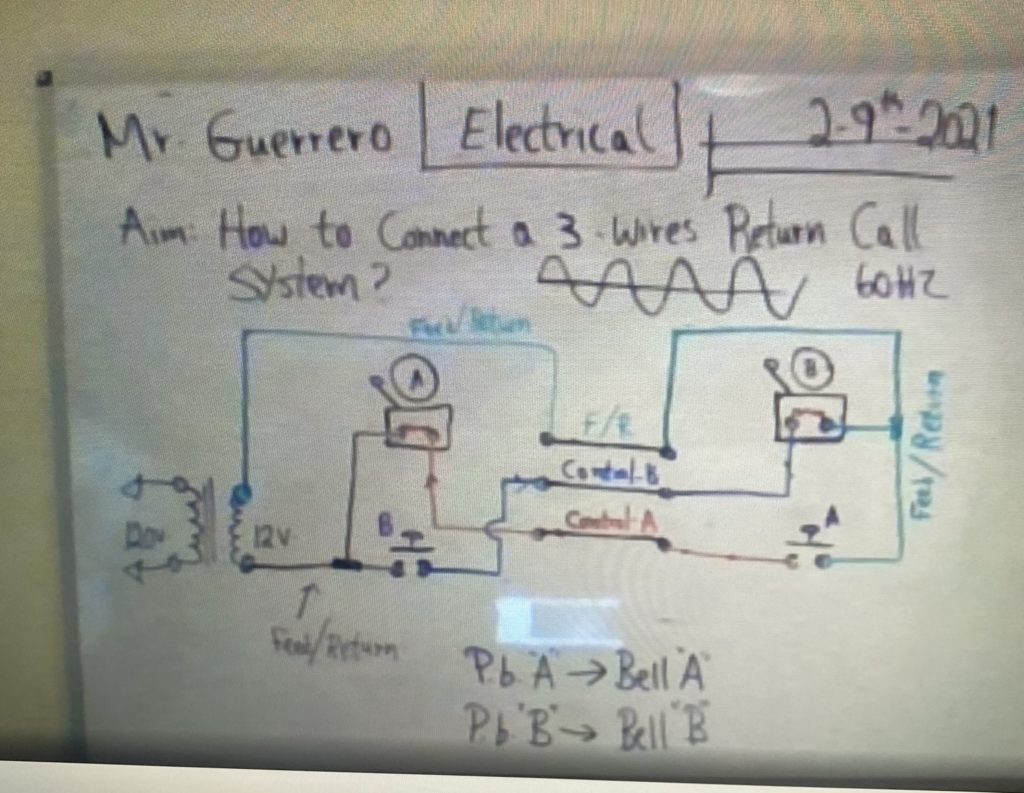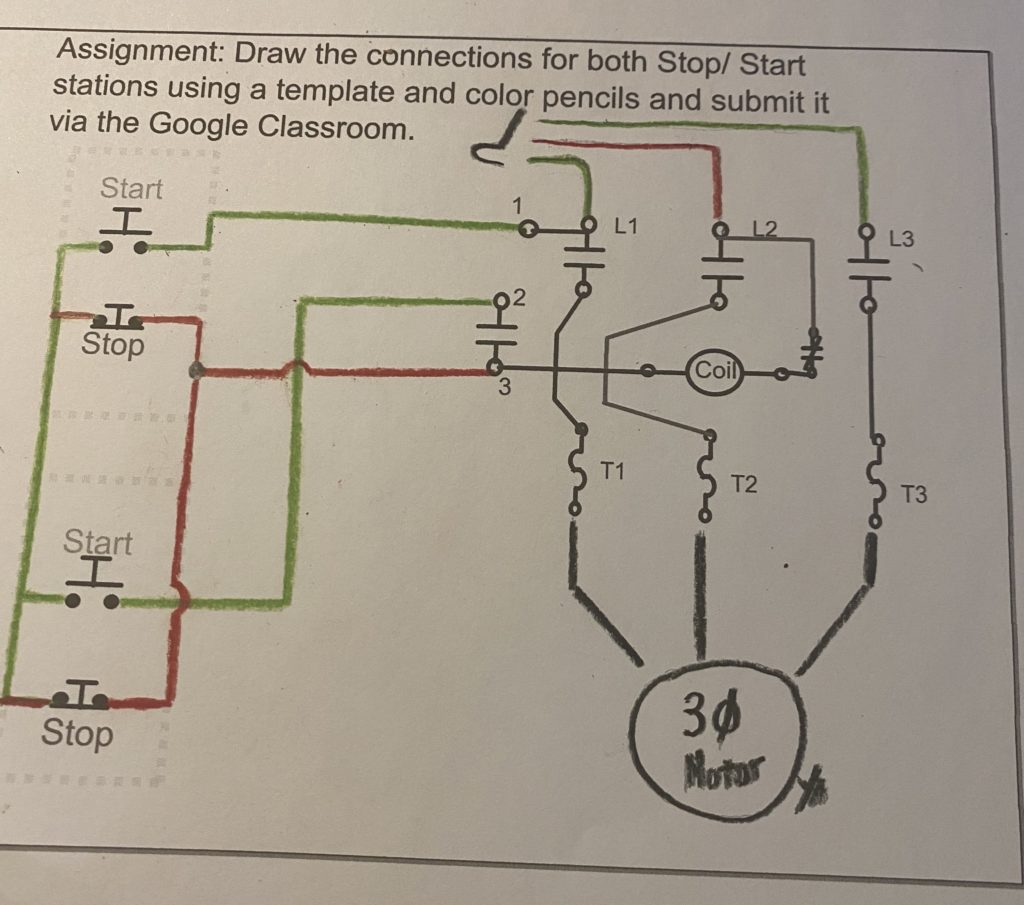
This diagram shows a 3 wire return call system. The three wires in the middle are the hot, neutral, and ground wires that are spliced together with other wires, providing a path for current to flow allowing push button A to ring bell A and vice versa.
My experience in Coop Tech`s electrical program has been challenging. With the shift to online learning, it has been difficult for me to complete assignments on time since I have to balance work and school. Also, because I am more of a visual learner, it takes longer to grasp information.
Despite this, I have learned a lot from my teacher, Mr. Guerrero. One thing that I have learned so far in his class is the difference between a series and a parallel circuit. A series circuit is a single wiring path that allows for electrical current to flow. The number of each component in the circuit equals the total voltage. In other words, the voltage is being shared between the components. Examples of components in the circuit include doorbells and lightbulbs. Unlike a series, parallel circuits don’t share voltage, instead the voltage across each of the components are the same and the current divides so that each component gets the same amount of energy.

The reason why I chose this program was because I didn’t get the opportunity to learn more about electricity, given the fact that the rise of Covid-19 led to schools closing. In my junior year, my electrical teacher, Mr. O’Brien, first taught my class about the functions of ground, hot, and neutral wires. After a week or two, we had to draw a diagram of a simple light circuit and then create it on our own using used wires/equipment. This sparked an interest in electrical because I realized that I enjoy working with my hands to create things.
With the experience I had creating electrical circuits at WHSAD, I wanted to do those same projects at Coop-Tech. Even though I spent most of the semester doing online learning, I was able to complete some hands-on projects at the site. What I hope to gain from the electrical program is the necessary skill sets to qualify for certain jobs related to electrical.

Dimitri also describes how he learned about OSHA certification in his Co-op Tech class:
The process of obtaining your OSHA certification is quite tedious but worthwhile. You are to take a 30 hour class course for 3 weeks. In this class you are taught many different things involving your rights as an employee, as well as the rules and regulations you must follow in the workplace in order to ensure a safe work environment. On the first day there is an “Introduction to OSHA” where you learn everything about OSHA. Some examples of what you learn in this topic are, OSHA’s mission statement, what it stands for, and also what particular events triggered the establishment of this administration. “Hand and Power Tools” is the second thing that you learn when taking this OSHA course. You are informed on the types of hazards that are associated with the use of these tools, along with OSHA standards related to it. Personal Protective Equipment, Fire Protection/Prevention, and Stairs and Ladders are what come after this which further explains the type of protection gear you wear at a job site, how to deal with fires using an extinguisher, and ladder/stair hazards. All together there are 21 courses that students are required to learn about in order to receive an OSHA certification. However, there is one final assessment that determines whether or not you get it. You must do well on this assessment in order to be certified.

